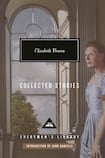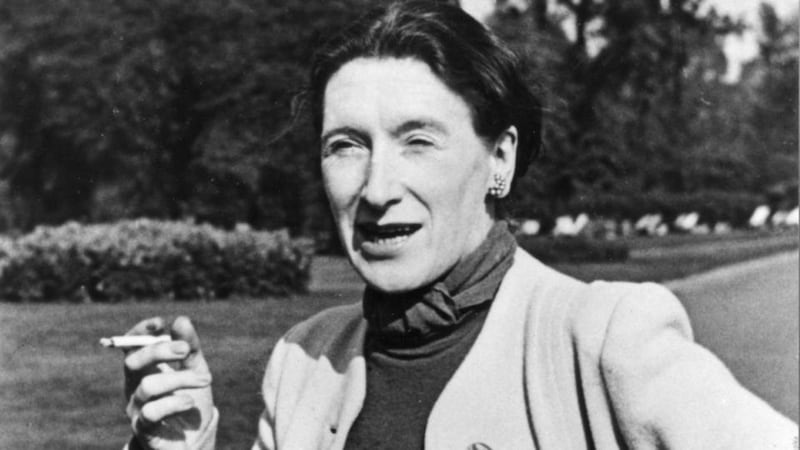
Some years ago, I studied Elizabeth Bowen’s short story Summer Night in a university seminar. Going back over the version I read from then, I found little handwritten notes. “Abstract”, “detail”, “perspectives”, “symbolism”, I had jotted. In the whole story, just one thing was underlined: “‘She’s quite right; we did have a girl,’ he said. ‘But I don’t know how to tell her the kid’s dead.’”
Well. Wow.
In class I don’t think we ever made it to that passage, which arrives about halfway through. We spent ages on the first paragraph.
“As the sun set its light slowly melted the landscape” …such description, such movement, and that non-existent comma after “set” – such freedom, such poetry “…till everything was made of fire and glass” – so abstract, so sharp. “In the not far distance” – but why not near distance? “…hills with woods up their flanks lay in light like hills in another world” – were the hills meant to seem like sleeping animals? And was there a threat implied, or were we imagining it?
In a sense, to read Bowen you must already know her: you must have warmed up the right muscles and be prepared to read backwards as well as forwards
There was so much to go on. We parsed it like a poem. It wasn’t yet clear what the story was about or what was going to happen. Yet when you reach those words: “the kid’s dead”, you realise that all along the story has been turning – like an enormous ship – to face them. That’s what makes Bowen’s writing so cunning: it’s all there, yet it’s never, until the last moment, obvious.

In his introduction to this new Everyman’s Library collected edition, John Banville expresses envy for “those readers who have still to come to [Bowen’s stories] for the first time”. “There is not a story in this substantial volume […]that is not brought off beautifully,” he asserts. While superlative this is, for the most part, true. But the reader who comes to these 79 stories for the first time might feel a bit overwhelmed. The things that make Bowen’s work brilliant – her ability to shift between the interior and the exterior; her swift changes in point-of-view; her oscillations between storytelling and social commentary – are also what make it challenging. In a sense, to read Bowen you must already know her: you must have warmed up the right muscles and be prepared to read backwards as well as forwards. And sideways too.
The War Years
Ordered chronologically from 1919 (with Breakfast written five years after Joyce’s Dubliners, three years before Eliot’s Wasteland, the same year as Woolf’s Night and Day) right through to the 1960s, this collection attempts to assert Bowen’s place in the canon. The War Years are perhaps her best in terms of stories: the inimitable Summer Night about a woman driving across the country to her lover and Mysterious Kôr about an on-leave soldier and his girlfriend seeking in vain to be alone together appear here.
Of course the “aboutness” of any is difficult pin down. There is so much contained in each. Even on a granular, sentence-level, worlds unfold. In Mysterious Kôr, “London looked like the moon’s capital – shallow, cratered, extinct.” In Human Habitation, they “hung their coats up on two empty, two somehow significantly empty pegs”. In Dead Mabelle, “Mabelle stood there, leaning a shoulder against the lintel […]Mightn’t she as well be there who wasn’t anywhere? Who was not.” There is a reason why, down the years, Bowen’s work has been described as realist by some, experimental by others. It is both.
To get the most out of Bowen's stories, you must become a student of them. They ask to be read again and again
One of my favourite stories is Joining Charles. In it, a young woman prepares to leave her house and join a husband she doesn’t love. Her dread is visceral: “[S]he felt as though someone had stabbed her a long time ago but she were only just feeling the knife.
I felt something similar the first time I reached that line – “the kid’s dead” – in Summer Night.
Years later, I felt it again, but differently. I had forgotten many aspects of what happens in the story. There is a scene where young Vivie gets out of bed, “step[s] out of her nightdress and set[s] out to walk the house in her skin”. She ends up tattooing herself with snakes, using chalk, and bouncing on “the bed [she was] born in”. Reading back, the scene felt both illuminating and impossible: like something I was only beginning to understand.
And that feeling abounds throughout. The reader who buys this collection must be prepared for such uncertainty. To get the most out of Bowen’s stories, you must become a student of them. They ask to be read again and again. Their architecture works best when lived in.








